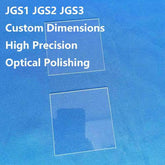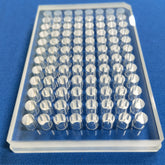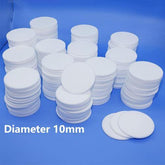Development History and Identification Methods of Sapphire Glass
1. Introduction of sapphire glass
The evolution of watch crystals has been a gradual process, starting from nothing and evolving to a variety of materials, from metal to silicate glass, and finally to the use of sapphire glass. Sapphire glass is now a common feature in high-end watches. Its exceptional hardness, light transmittance and wear resistance ensure that any watch equipped with it will display a unique luster.
Sapphire crystal glass is not derived from natural sapphire but is produced through controlled synthetic processes. The material is composed primarily of aluminum oxide, with trace additions of titanium and iron. Through purification during synthesis, impurities are eliminated, resulting in a colorless, transparent material rather than the blue hue characteristic of natural sapphires. Initially developed for military applications, it has since found extensive use in optical and precision industrial sectors, emerging as an engineered synthetic material specifically designed to perform reliably in harsh and extreme environments. With a Mohs hardness of 9, it is surpassed only by diamond in terms of hardness.
 Despite its renowned hardness, it is important to exercise caution when handling sapphire glass to prevent damage from impacts, heavy pressure or dropping. Due to its high hardness, the toughness of this material is relatively low, and there is a risk of cracking. Additionally, sand, gravel, or granite may contain diamond impurities with higher hardness. Therefore, during use, friction with these substances should be avoided to prevent scratches.
Despite its renowned hardness, it is important to exercise caution when handling sapphire glass to prevent damage from impacts, heavy pressure or dropping. Due to its high hardness, the toughness of this material is relatively low, and there is a risk of cracking. Additionally, sand, gravel, or granite may contain diamond impurities with higher hardness. Therefore, during use, friction with these substances should be avoided to prevent scratches.
2. Methods for identifying sapphire glass
Therefore, how can we distinguish ordinary glass from sapphire glass? Next, we will introduce several practical identification methods.
(1) Breathing method
When breath is applied to a sapphire glass surface, the resulting condensation rapidly dissipates due to the material’s exceptional optical transmittance. Typically, the mist completely disappears simultaneously with the cessation of breath. Upon subsequent observation, no visible trace of condensation remains on the glass surface.

(2) Scratching method
When a fingernail is drawn across a sapphire glass surface, it should glide smoothly with no perceptible resistance. The detection of any significant friction or obstruction suggests the material may be an alternative glass or crystalline substance rather than genuine sapphire.
(3) Water-dropping method
Drop water on the glass surface and then erect the glass to a vertical orientation while observing the water droplet. If the droplet maintains cohesion and slides smoothly, this indicates probable sapphire composition. Conversely, alternative materials typically cause immediate droplet spreading.






